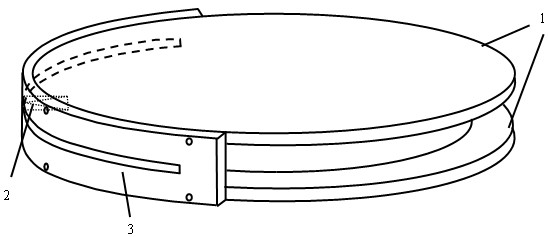Air dielectric cylindrical lens antenna
A technology of air medium and cylindrical lens, applied in the direction of antenna, electrical components, etc., can solve the problem of satellite load burden, achieve good directionality, reduce weight, and achieve simple effects
- Summary
- Abstract
- Description
- Claims
- Application Information
AI Technical Summary
Problems solved by technology
Method used
Image
Examples
Embodiment Construction
[0022] When the height of the parallel plate waveguide is chosen as / 2 when (of which, is the wavelength in free space), and the TE can be excited between the parallel plates 10 mode, so the antenna polarization direction is horizontal polarization. Using this principle, we can realize a lens antenna without any dielectric material. At the same operating frequency, different parallel plate waveguide heights will result in different propagation wave numbers. We control the relative refractive index of the air dielectric lens by selecting different parallel plate waveguide heights. At the same time, in order to achieve the optimal antenna aperture efficiency , the feed should be placed at its focal point. The direction pattern of this air dielectric cylindrical lens is similar to that of traditional cylindrical lenses. It can achieve narrow beams in the E plane (horizontal plane), and a very wide beam in the H plane (elevation plane). At the same time, due to the symmetry ...
PUM
 Login to View More
Login to View More Abstract
Description
Claims
Application Information
 Login to View More
Login to View More - R&D
- Intellectual Property
- Life Sciences
- Materials
- Tech Scout
- Unparalleled Data Quality
- Higher Quality Content
- 60% Fewer Hallucinations
Browse by: Latest US Patents, China's latest patents, Technical Efficacy Thesaurus, Application Domain, Technology Topic, Popular Technical Reports.
© 2025 PatSnap. All rights reserved.Legal|Privacy policy|Modern Slavery Act Transparency Statement|Sitemap|About US| Contact US: help@patsnap.com



